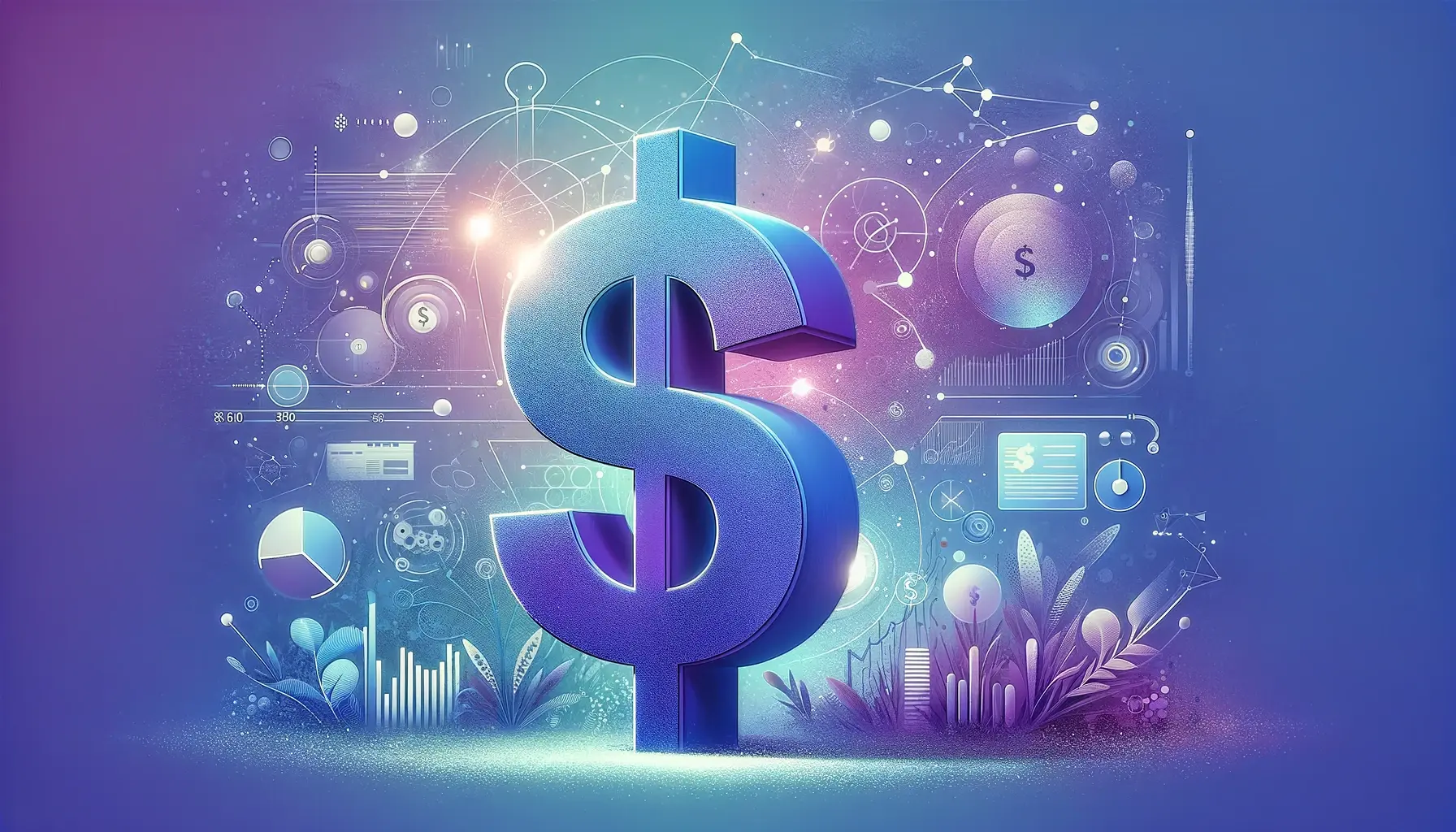What You Should Know About B2B Sales Processes: Features, Methods, and AI Tools

Learn about the B2B sales process from stages of the B2B funnel to tactics and AI tools
Selling to businesses is not as simple as peddling your wares directly to consumers. Your sales teams will need to buckle up for a long buyer journey that spans multiple decision-makers, relationships, and negotiations.
If you want your sales team to succeed, they’ll need effective strategies, easily replicable processes, and essential tech in their arsenal. Without them, it’s akin to having them go up a creek without a paddle.
For an effective B2B sales process, you’ll need to know not just what it is, but how to do it.
What is B2B sales?
Business-to-business sales refers to transactions between companies. In other words, B2B describes the process of one company selling a product or service to another company.
What makes B2B sales so challenging is that the sales process entails multiple decision-makers and a longer buyer’s journey than its business-to-consumer (B2C) counterpart.
What’s the difference between B2B and B2C?
B2B describes businesses selling to businesses. For B2C sales, instead of selling to other companies, businesses sell directly to consumers.
Here are the basic differences between B2B and B2C:
- Customer base – As mentioned above, B2C sells to consumers, while B2B targets other businesses or organizations.
- Sales cycle – B2C sales involve quick, straightforward transactions focused on prices, features, and benefits. The B2B sales cycle is far more complex, involving multiple stakeholders, complex requirements, and prolonged negotiations.
- Transaction volume – With B2C, businesses see a high volume of transactions of relatively low value, while those in the B2B industry deal with fewer sales of much higher value.
- Sales strategy – B2C is more transactional and focuses on addressing an individual’s needs, preferences, and pain points. The sales strategy for complex B2B sales processes involves dedicated account management, customized offerings, and a consultative approach.
- Marketing tactics – B2C marketing campaigns tend to be gimmicky, focusing on emotional appeals and price promotions. B2B campaigns are more protracted as they use a combination of push and pull marketing to build relationships and brand credibility.
Although B2B sales are much more complex than B2C, successful B2B has the potential for a much higher and more sustainable impact on your company’s bottom line.
Why are B2B sales essential for business prosperity?
B2B sales come with benefits that allow businesses to feed their bottom line without exhausting their resources.
With B2B sales, you might be playing the long game, but you’ll be reaping huge rewards if you do it right.
What are some examples of B2B use cases?
Here are some common B2B sales examples. There’s a good chance that you’ve encountered one or several of them at some point:
Company-wide software
B2B companies can sell to businesses that need digital products to improve their operations. SAP, for instance, sells enterprise resource planning (ERP) software to help companies streamline their core business processes, including HR, finance, and supply chain.
Consulting firms or development teams
A B2B company may offer services that enable other companies to grow their business or bring their vision to life. Accenture is an IT consulting firm that helps companies reach their full potential with the right tech products or digitalization strategies.
Data analytics services
Some B2B companies specialize in helping businesses make sense of their fragmented data. For example, Genpact boasts a team of 10,000 data specialists, all geared up to turn data into business intelligence.
To succeed in B2B sales, you need sales reps who are adept at pushing decision-makers to finally make that purchase.
Who is a B2B sales representative?
A B2B sales representative connects with corporate decision-makers to build relationships and encourage the purchase of products or services. They take responsibility for revenue growth, profit generation, and relationship building.
B2B sales process
The B2B sales process is best described as a funnel – a customer-focused model that breaks the buyer’s journey into stages.
What is the B2B sales funnel?
The B2B sales funnel visually represents the path prospects follow from their first contact with your brand to their eventual conversion into paying customers. It enables the sales and marketing teams to track and nurture B2B sales leads until they finally make a purchase.
Businesses may use different formats of sales funnel. Let’s look at the one that goes beyond the purchase, showing you how to build loyalty with post-purchase considerations.
Awareness
At stage one of the sales funnel, prospects first hear about or interact with your product. This used to be the domain of the marketing teams. They attracted prospects with inbound marketing tactics like blog posting and search engine optimization.
Thanks to social media, sales teams are now in on the game. Your sales reps can actively stir conversations on channels where your target audience already hangs out.
Interest/Discovery
This is where you not only capture your prospects’ attention but you keep it. You don’t push for a sale just yet. Instead, you gently offer solutions that demonstrate value or solve the target buyer’s problems.
Instead of closing a sale, your marketing and sales teams will often focus on building connections with companies that satisfy your ideal customer criteria. This might entail sending out a series of informative emails, offering free ebooks, or hosting webinars.
Consideration
At this stage, your prospects are no longer just observing your brand and learning about the problems you might solve or the value you offer. They take a closer look at your product or service and consider how it might fit into their business or organization. Your leads can be considered warmed up and re-classified as marketing-qualified leads (MQLs).
Your teams must be prepared to provide case studies and discuss the features and benefits of your offerings.
Intent
This is a critical stage of the sales funnel. The prospects are no longer just taking a cursory glance at your products or services. They’re now demonstrating a serious buying intent.
It’s an excellent time to double down on a prospect’s growing interest with product-focused webinars, demos, or free trials.
Evaluation/Decision
The evaluation stage is when prospects are getting ready to make a final purchase decision. They’ve probably seen your demos and explored the case studies. By now, they already know just how much the product or service would cost. But they’re still weighing their options and shopping around for the best deals.
Your sales reps must be equipped with effective negotiation tactics and closing skills. Leveraging urgency, discounts, and attractive service-level agreements can come in handy.
Purchase
Now, here’s the most exciting stage – The part where you actually close the deal! The prospect officially converts into a paying client after a long B2B sales cycle.
The sales team must stay on top of the buying process, always ready to provide assistance and make the experience frictionless.
Post-purchase
Although the deal is now sealed, the job of the sales teams is not over. Early on, you should strive to retain the client and pave the way for repeat purchases. A seamless onboarding process is critical, as it leads to higher customer satisfaction and retention. In fact, 82% of businesses consider the onboarding process a crucial value driver that increases the worth of their product or service offerings.
Note that leads don’t always move down the B2B sales funnel in a linear way.
They may enter and exit the funnels at different sales process stages. It’s the sales team’s job to keep qualified leads on the course or even convince those who have exited to hop back on the buyer’s journey. For that, you’ll need to get a handle on your lead generation.
What is B2B lead generation?
B2B lead generation is about identifying potential buyers and encouraging them to make a purchase. Your goal is to attract these prospects, bring them into the sales funnel, and nudge them along until they turn into paying customers.
Once you’ve generated and engaged a lead, your next task is to keep them warm. A well-crafted sales strategy will ensure that your nurturing campaign works toward broader sales objectives.
B2B sales strategy
A B2B sales strategy is a clearly structured plan that helps you find, engage, and convert other businesses into paying clients. Given the complexity of B2B sales—bigger deals, longer decision-making, multiple stakeholders—having a solid strategy is key to success.
Let’s discuss in more detail why a B2B sales strategy is a must-have:
- Complex decisions. In B2B, the buying process involves an average of five people. A clear strategy helps navigate the conversations and get everyone on board.
- Longer sales cycles. B2B deals often take more time to close than B2C sales. Case in point, 82% of businesses take between one and six months to evaluate software before purchasing. A well-structured approach keeps things moving smoothly.
- Larger deals. B2B sales usually mean bigger contracts, so your strategy needs to focus on making the price and value clear for both parties.
- Building long-term relationships. Making a sale is just the beginning. You want to keep the relationship going with great customer service, follow-ups, and possibly additional sales down the road—and this requires a strategy.
To design a successful B2B sales strategy, you must know your target, properly communicate your value, set up a well-structured process, and use the right tools to close more deals.
We’ll discuss a few effective approaches in the next section.
Common B2B sales strategies that work
B2B sales involve a lengthy, resource-intensive deal cycle. You can make your efforts count with these battle-tested strategies.
Targeted account-based marketing (AMB)
Account-based marketing is a B2B sales strategy that pours resources into specific target businesses. The sales and marketing teams engage in personalized campaigns geared at the unique features and pain points of the target accounts.
Thought leadership content
A B2B thought leadership content strategy entails creating and distributing high-quality content that showcases your expertise and establishes your organization as the industry leader. This means producing articles, podcasts, videos, webinars, and other types of content that provide insights and solutions that resonate with your prospects.
CRM and sales automation tools
B2B sales tools are your best option for turbocharging sales operations. Customer relationship management (CRM) is particularly helpful for centralizing customer data and insights. It allows sales reps to easily find the information they need to keep conversations consistent and meaningful.
Customer 360 by Salesforce, for instance, can help your teams personalize various touchpoints along the customer journey.
Salespeople can delegate repetitive tasks to sales automation tools, freeing up more bandwidth for value-added services. For example, AiSDR can quickly sort the leads and nudge them down the sales funnel until they’ve booked a call with the sales reps.
Exceptional customer service
B2B sales entail a long process of wooing multiple decision-makers. Customer service must be exceptional not only to get them to make a purchase but to build a long-term relationship. You need to foster trust to maximize the clients’ LTV and compensate for the costs of winning them over.
The right tech tools will help you implement these strategies and streamline the entire sales process.
AI tools in B2B sales
Proper B2B sales enablement tools can accelerate sales, cutting costs and making your sales teams much more effective. The following AI-powered tools are just what you need.
AiSDR
AiSDR is an AI-powered sales tool that completes the tasks of a sales development rep faster and more efficiently. It speeds up the sales cycle while reducing operational costs.
Pricing: $900 per month for 1,000 emails sent

ZoomInfo
ZoomInfo provides sales intelligence data that shows B2B companies which customers to reach and how.
Pricing: Starts at $15,000 annually
Mailtastic
Mailtastic makes it easy to manage your employees’ email signatures and use them to display marketing banners.
Pricing: available upon request
Reachdesk
Reachdesk boosts engagement with data-driven gifting, allowing you to feed your pipeline with more leads and convert more prospects.
Pricing: Starts at $20,000 annually
Trumpet
Trumpet drives revenue by improving buyer journeys with personalized and interactive microsites.
Pricing:Starts at $37 monthly
Hotjar
Hotjar tracks how users interact with your digital product to optimize user experiences and boost conversion.
Pricing: Starts at $32 monthly
Incorporating these tools into your daily operations will make your sales processes much more efficient and your sales reps much more productive.
How can you be confident that your operations are actually becoming more efficient? Here are a few metrics.
How do you measure B2B sales performance?
Tracking B2B sales performance is all about understanding what really works and what needs improvement. Keep an eye on the following key metrics:
Revenue metrics, or How much money are you making?
Why it matters: Your ultimate goal is to drive revenue. These metrics help you track the money flowing into your business and show whether your sales efforts are paying off.
- Total revenue: The total amount of money your sales team generates from both new deals and existing customer renewals.
- Revenue growth: How does your current revenue compare to last month or last year? This figure shows your overall growth.
- Average deal size: A typical value of deals you close. This metric shows the impact of each sale.
Lead metrics, or How good are you at finding new business?
Why it matters: Measuring how many leads you bring in and how well you convert them tells you whether you’re building a strong sales pipeline.
- Lead generation: How many new leads are you attracting? This figure shows whether your marketing and outreach are successful at bringing in fresh prospects.
- Lead conversion rate: Of all the leads you get, how many turn into customers? A higher conversion rate means your team is effectively turning interest into actual sales.
- MQLs vs. SQLs: Marketing-qualified leads (MQLs) show interest, while sales-qualified leads (SQLs) are ready for direct sales. By tracking this correlation, you can see how well your marketing and sales teams work together.
Sales cycle metrics, or How fast are you closing deals?
Why it matters: In B2B sales, time is money. Knowing how quickly you can move from lead to closed deal is crucial for accurate forecasting and efficiency.
- Sales cycle length: How long does it typically take to close a deal? Shorter cycles can improve cash flow, while longer ones might signal bottlenecks.
- Time to first contact: How quickly does your sales team follow up with new leads? Fast follow-ups often make closing deals more likely.
- Sales pipeline velocity: How fast are deals moving through your sales pipeline? A quicker pace translates into more sales and revenue.
Win rate, or How good is your team at closing deals?
Why it matters: A high win rate means your sales reps effectively convert opportunities into customers. This is one of the most direct indicators of sales team success.
- Close rate (win rate): This shows the percentage of deals won vs. those lost. Higher win rates mean your sales team is great at closing.
- Opportunity-to-deal conversion: This measures how many opportunities (qualified leads) end up as closed deals. It’s a great way to track your sales reps’ performance.
Sales team performance, or How is each rep doing?
Why it matters: Every member of your sales team contributes to the overall success. Tracking individual performance can help you identify top performers and areas where others need support.
- Quota attainment: Are your sales reps hitting their targets? This metric shows whether your team is on track to meet the company’s sales goals.
- Sales activity: How much activity is each sales rep generating (calls, emails, meetings)? This tells you how much effort is being put into the sales process.
- Individual conversion rate: How effectively is each rep converting leads into customers? Compare this across your team to see where coaching is needed.
Customer metrics, or How happy are your customers?
Why it matters: B2B sales is all about building lasting relationships. If customers are happy, they stay longer, buy more, and bring in new clients. Tracking customer satisfaction helps you maintain long-term partnerships.
- Customer retention rate: How many customers stick around after their first purchase? Retaining customers is cheaper than acquiring new ones, and happy clients are often your best advocates.
- Churn rate: This is the flip side of retention. It tracks how many customers stop using your product or service. A low churn rate means you’re keeping clients happy.
- Lifetime value (LTV): How much revenue does a customer bring in over their lifetime? The higher this number, the more value you get from each client.
- Net promoter score (NPS): A simple but powerful metric that asks your customers how likely they are to recommend your business. A high score indicates strong satisfaction.
Profitability metrics, or Are you making money?
Why it matters: It’s important to track not just how much money you’re making, but how much you’re actually keeping. These metrics show whether your sales efforts generate a good return on investment.
- Cost of acquisition (CAC): How much does it cost to acquire a new customer? A lower CAC signals that you’re using your sales and marketing dollars efficiently.
- CAC:LTV ratio: This metric compares how much you spend to acquire customers to how much they bring in over time. A healthy ratio shows that your business is growing profitably.
- Gross margin: The money you keep from each sale after you cover the costs. A higher gross margin means you’re running an efficient, profitable business.
Forecasting and pipeline metrics, or How well are you predicting sales?
Why it matters: Accurately predicting future sales is critical for planning and resource allocation. These metrics help you understand whether your sales pipeline is healthy and if you’re likely to hit your targets.
- Sales forecast accuracy: Are your sales predictions close to the actual outcomes? More precise forecasts mean better planning and resource management.
- Pipeline health: Are you filling your pipeline with enough quality opportunities to meet your sales goals? Review your pipeline health regularly to avoid surprises down the road.
Customer feedback, or How are customers feeling?
Why it matters: Customer feedback highlights what you’re doing right, what needs improvement, and where you could strengthen the relationship.
- Customer surveys: Regular surveys can give you a quick snapshot of how your customers feel about your product, service, and overall experience.
- Referrals and testimonials: Happy customers often become your best salespeople by referring others or providing glowing testimonials.
To measure B2B sales performance, focus on a mix of key metrics like revenue, lead generation, win rates, and customer satisfaction. By tracking these, you’ll have a clear picture of what’s going well, where to improve, and how to keep your sales engine running smoothly.
However, you should go beyond tracking your current performance and anticipate the future. Let’s see what’s on the horizon of B2B sales.
What is the future of B2B sales?
B2B businesses need to keep up with fast-evolving technology and increasingly demanding customers. Here’s a look at what’s ahead for B2B sales:
Increased use of AI and automation
Artificial intelligence (AI) and automation are transforming how B2B sales teams operate, helping streamline operations, personalize sales efforts, and make data-driven decisions.
Account-based marketing (ABM) takes center stage
ABM has been a growing trend in B2B, and it’s set to become even more important. Instead of casting a wide net, sales teams are focusing on specific companies that are the best fit for their products or services.
Key tools: ABM platforms like Terminus and Demandbase that assist with targeting, advertising, and measuring success; sales automation tools like AiSDR with visitor tracking features to facilitate targeted and personalized handling of accounts.
More personalized and consultative selling
Buyers expect more personalized experiences and a deeper understanding of their business challenges. In the future, sales teams will shift from a transactional approach to a more consultative model, focusing on solving customer problems and delivering value rather than just closing deals.
Key tools: Data analytics, customer feedback, and advanced CRM systems to better understand customer behavior and tailor outreach.
Data-driven decision making
As data becomes more accessible, businesses are increasingly using it to make informed decisions. Expect the sales teams to rely more on data analytics to drive strategies, from identifying the best leads to forecasting future sales.
Key tools: Predictive analytics platforms, CRM systems with AI capabilities (Salesforce, HubSpot), and business intelligence tools (Tableau, Power BI).
Sales enablement and training
As the B2B sales environment becomes more complex, sales teams will experience a greater need for continuous learning and development. Sales enablement tools will help reps access the right content, training, and resources at the right time.
The future of B2B sales is all about adaptation—embracing new technologies, adjusting to changing customer expectations, and building deeper, more personalized relationships with clients.
To stay ahead, sales teams will need to master data analytics, AI, and automation while focusing on long-term customer experience and sustainable practices. And the right tools are a must.
Scale your B2B sales process using AiSDR
Due to its complexity, B2B can be far more challenging than B2C. At the same time, if you can unlock quality B2B deals, you’ll build a steadier stream of revenue than if you relied solely on individual customers.
In order to pursue profitable B2B opportunities, you’ll want to consider equipping your team with an AI sales tool that helps you scale your pipeline in a cost-effective manner.
As an end-to-end email outreach platform, AiSDR will nurture leads, hyper-personalize content, send follow-ups, and book meetings on full autopilot.
Book a demo to learn more about how AiSDR can assist you.
FAQ
What are the key features behind an effective B2B sales process?
An effective B2B sales process lets your teams track leads along a sales funnel. This makes it easier to nurture prospects and nudge them to become paying customers.
What challenges do companies face when striving for effective B2B sales?
B2B sales involve a long buyer journey and multiple decision-makers. Sales teams must be prepared to play the long game, practicing dedicated account management and building meaningful relationships.
What software should I use to automate B2B sales?
AI-powered sales enablement tools will help you automate tasks, streamline workflows, and reduce your sales teams’ workload. AiSDR, ZoomInfo, Mailtastic, Reachdesk, Trumpet, and Hotjar are some options worth exploring.











